
Restlessness is all too prevalent in our society. We are encouraged to be busy from the moment we wake up, while at work, where the term "multi-tasking" is considered a virtue. We are forced to move, move, move with little time to pause or rest. Bathed in constant stimulation of screaming televisions, blaring music, the ring of the cell phone, the beep of email messages coming through, many of us don't know what being still or rest really is. Often, when we are so conditioned by restlessness, entering stillness and quiet may feel unpleasant.
However, no one can survive remaining totally restless. Restlessness actually feels unpleasant, and we often push away from this unpleasant feeling by becoming more restless. It is much like a rock rolling down a hill, gaining momentum as it rolls. Restlessness affects both the body and the mind, causing thoughts to race faster, and the body to become tense and fidgety. Restlessness is a form of alienation from oneself. This alienation feels unnatural and uncomfortable, and in seeking a solution to this discomfort, we look outward for answers. We get busy, which creates more restlessness and, because we aren't able to see the initial cause of the restlessness, more alienation. Restlessness can manifest in many different ways: worry, planning, agitation, self-criticism, regret, anxiety, remorse, business. What all these forms of restlessness share is a preoccupation with the past or the future. Restlessness is a shifting away from presence. What can you do when caught up by Restlessness? Find a quiet place. A place that is calm, still and quiet is must easier to induce a calm, still and quiet body and mind. The best solution is to sit in stillness and reconnect to full presence. Focusing on the breath induces a calm state. If you are able to just observe the restlessness as it expresses itself in your body and mind, using the breath or a sound as an anchor, you will allow the energy to dissipate. Often the body just needs to unwind continuing with restlessness only winds the body up tighter. Think of a glass of dirty water. If it is continually agitated the water stays dirty. But if it is left to rest, eventually the dirt sinks to the body and the water becomes clear and still. Remember, getting and staying busy and trying to distract yourself is just a way to fuel restlessness. Lovingkindness meditation practice can be helpful when thoughts are caught up in self-criticism, judgements or regret. A mind that is at peace is not restlessness. Try repeating phrases, such as: May I be happy. May I be at peace. May I be well. May I be safe. Such compassionate statements directed toward yourself help focus the mind and open the heart, easing the mind toward peace and acceptance. Smiling can go a long way toward calm. Smiling evokes a sense of satisfaction and contentment. Smiling during practice will keep practice gentle and supportive. Smiling when you catch yourself caught up in restlessness, can help you to pause long enough to shift you back to presence. When you are able to sit in stillness, allowing restlessness to have space, explore it. Investigate and understand the cause. Is it fear? Insecurity? unpleasantness? anger? Using the STOP technique can be very helpful at this point. When very busy and it is difficult to fully stop and sit with the energy, try to work in frequent short breaks to help break up long stretches of busyness and keep it from shifting into restlessness. Sometimes, it is just too difficult to stay with strong restlessness. In this case, it is not compassionate to force yourself to endure it and muscle through. Instead, use wise and skillful breaks. You can tell yourself, " I will focus on some calming breathes for the next three minutes." Then go take a walk, or have a cup of tea, and then go back for another three minutes or so. Here, being a little busy can be beneficial. Just be careful that you don't get too busy and turn it back into more restlessness. Remember, overall, self-compassion is key to keeping the heart open and relaxing the body. If you are able to recognize when you're caught up in Restlessness, you'l learn how to stop becoming victims of it. Beginning by finding ways to slow down. Try cutting back on unnecessary activities, and learning to experience calm and stillness as pleasant and necessary. It can be challenging at first to avoid getting caught by Restlessness--especially when so many around us are unwitting slaves to it. Regular meditation practice is the best preventative medicine, as it allows you to experience how Restlessness manifests in the body and mind without fueling it. Over time meditation will help free you from the habit energy of Restlessness.
0 Comments
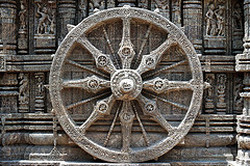
Going for refuge in the Dharma is seeking refuge in Truth. Dharma can be interpreted to mean “cosmic law and natural order” but it also, and most often refers to the teachings of the Buddha, which are meant to direct one to the Truth. Taking refuge in the Dharma is similar to how, in Christian faith, the Gospels lead to understanding and the teachings of Jesus. The Dharma provides a path and practice so we can be freed from dissatisfaction, frustration and suffering.
It is in Going for Refuge in the Dharma where we learn and apply the teachings of the Four Noble Truths, as taught by the Buddha. At first we look to the Four Noble Truths and other teachings to learn the Dharma, but eventually True Dharma reveals itself to us simply by living our lives and in practicing Compassion, Attention and Gratitude.
In talks and in the chants you will often hear, “I go for refuge in the Buddha, the Dharma, and the Sangha.” Which are often referred to as the Three Jewels or Three Treasures. What does that mean? What does it mean to go for refuge? What are you seeking refuge in? Going for refuge in the Buddha, Dharma and Sangha is fundamental to our practice. To seek refuge means to look for a place that is safe, a place we can rely on, a place of peace, love and presence, no matter what our situation. Often we get caught up in negative thinking, become overly busy, feel disconnected. In those moments, we can go to the refuge of the three jewels by remembering we have access to peace, gratitude, openness and the experience of full presence. Going for Refuge in the Three Jewels are the doorways back this full presence. We go for Refuge in the Buddha to remember our awakened presence, of which we all possess. We go for Refuge in the Dharma to remember that the teachings and practice can free us from suffering. We go for Refuge in the Sangha to remember that the spiritual community, it is to find refuge in compassion and gratitude. Going for refuge is shared in some form of another in all faith traditions. The Christian equivalent to the Three Jewels are Jesus (the Buddha, the awakened one), the Gospels (the Dharma, the teachings) and the church congregation (the Sangha, the sacred community of love). 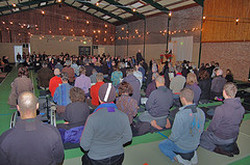
Going for refuge in the Sangha is seeking refuge in the spiritual community. The spiritual community is made up of monks, nuns, laymen and laywomen. The Buddha said, “good friends are the whole of this holy life.” In the same vein, Christians find strength in the community of the church. Practicing with a Sangha is essential for spiritual growth and development. Even if we have a sincere desire or appreciation for practice, our ability for our efforts to bear fruit can be difficult without the support of friends and people of like minds working together. Being with a Sangha, investing in a Sangha, supporting a Sangha is putting Compassion, Attention and Gratitude in motion.
Thich Nhat Hahn says, “The best way to practice [mindfulness] is with a Sangha: the collective energy of mindfulness deepens in practice. The presence of the Sangha is a protection and an empowerment, and this presence sustains us during the rest of the week as well.” The individuals of a Sangha produce collective energy that help each other to become more mindful of his or her actions. We practice individually at home and our work-a-day lives, but it is the Sangha, coming together to practice that offers safety, support and empowerment so that the practice continues outside of the practice center. Thich Nhat Hahn, again, “When members of a Sangha live in harmony, their Sangha is holy. Don’t think that holiness is only for the Pope or the Dalai Lama. Holiness is also within you and within your Sangha. When a community sits, breathes, walks, and eats together in mindfulness, holiness is there. When you build a sangha that has happiness, joy, and peace, you’ll see the elements of holiness in the Sangha.” Going for refuge in the Sangha is actively breaking down the artificial barriers that separate us from each other. This helps us to see that the spiritual community extends beyond this group of people that come together to practice and includes all beings. Other people, the trees, the plants, the animals, the stones, the sky, the sun, etc. all become connected and holy. But to truly understand the wider, outer Sangha, we need the smaller inner Sangha of our own loving, compassionate self. 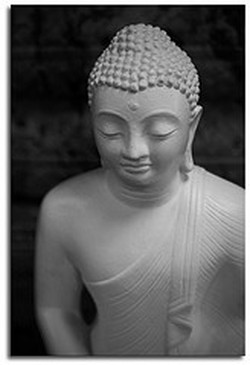
Going for refuge in the Buddha is to find refuge in the enlightened nature we already innately possess. Just as the Christian aspires to become Christ-like through words, thoughts and actions. Taking refuge in the Buddha we enter the path of transformation, through word, thought and action, we walk the path to end suffering.
When we go for refuge in the Buddha, we are entrusting ourselves to our own innate nature to walk in beauty, truth, and wisdom, which is a result of our own experience of the practice itself. Going for refuge in the Buddha is entering into pure awareness. It is acknowledging that our innate nature is closer to us than anything. As St. Francis of Assisi said, “what we are looking for is what is looking.” All we must do is to relax back into what we are by remembering that all beings share this full presence, this awakeness, which is our true essence. 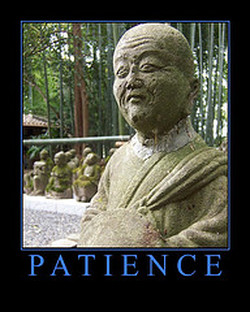 Much of our time is spent in up in our heads, out of presence and on our way to the next thing. We are driving our cars and already thinking about our destination. We are engaged in a conversation with someone and thinking about what we are doing next. We have been conditioned to believe what comes next is more important that what is happening now. Waiting is a part of life. The average person spends five years of his or her life waiting in lines*. We wait on the phone, wait through tv commercials, we wait at red lights, we wait at the doctor's office, etc. Animals wait for food, wait for predators to go away, wait for the seasons to change. Waiting is a part of life of all living beings. Yet, human beings have seemed to turn waiting into a major source of stress, almost a practiced art form. I see waiting as an opportunity. Waiting can be a time to pause and meditate in the midst of a busy day. It can allow us the time to take stock of a situation, to see from within where we are at the moment. Waiting can be the fertile ground for practicing patience. Before we explore how to practice patience, we need to explore impatience. Impatience is made worse by striving, hurrying, anger or irritation. When things are not going our way or if people get in the way of our perceived agendas, impatience rears its ugly head. But if we react to these situations with impatience, we are setting ourselves up for much frustration and more and more impatience. Ironically, impatience fuels more impatience. Think about how an experience of waiting that evokes impatience sets you up for more and more irritation throughout the day. Can you recall how impatience makes it much easier to become annoyed at things or how you tend to notice more and more annoying and irritating things after becoming impatient. Waiting is inevitable. Not getting our way is inevitable. However, we do have a choice to act with calm or with reactivity, How can we practice patience then? There are four ways we can come back to presence and welcome patience: 1 - Remain Calm Often the best way to defuse impatience is to not engage. Focus on the breath, reconnect with the body. Practice the STOP technique to halt the habitual response of impatience, so that you can halt the cycle of impatience fueling itself. 2 - Ask yourself, "does it really matter?" Is getting riled up and impatient over a long grocery store line really contribute to anything? Does it make the line shorter? Instead, we might use this time to reflect on our need to hurry, to examine how we use our time and whether we need to provide more breathing space in our life. We can use the wait in line to meditate, make it a worthwhile use of our time. 3 - Remember that, whatever is happening, no matter how challenging, "this too shall pass." All things are impermanent, thoughts, emotions, sensations, situations all come and go. While there may be disappointment and difficulty now, eventually it will pass away. Avoid the black and white thinking of right and wrong, life is more complex than that. We often lose perspective when in the grip of difficulty, which means our ability to judge is often faulty. Also refrain from judging others, again, our perspective is limited, and judging only increases our impatience and anger. 4 - We can set the affirmation that in all experiences, even difficult ones, can be the catalyst to awakening. We know that responding to a situation with irritation only begets more irritation, instead of getting upset, we can look to the underlying cause. Is my impatience due to just having too much on my plate? Am I frustrated because I am feeling acknowledged? Am I responding with irritation because I don't feel listened to? Turn a negative experience into an opportunity for greater insight and awareness. It is important to remember that practicing patience is not passive. It is not simply giving in to whatever difficulty we are facing, instead it is an active slowing down, a resolve to staying present and aware. When we are able to open up to patience, we are gifted with the beauty and mystery of life as it exists in the present moment. Additionally, by remaining calm and patient in tough situations, we become a source of comfort and healing to those around us. *Not-So-Vital Statistics : Could It Be True That Five Years of Our Lives Are Spent Waiting in Line? As I prepare posts about practicing patience and dealing with the resistance of aversion, I wanted to share some simple little tools to help slow us down a bit during our busy, often too busy, days. Having moments of pause and reflection throughout the day may seem counter productive, when we are attempting to multitask and get things done. But actually, pausing throughout the day helps with better focus and concentration, reduces stress and helps with clarity of mind, all of which helps with productivity. So, in addition to our daily sitting practice, we can use the following tools during our working, active daily life to carry the energy of our sitting with us. I have also included a couple of tools for timing sitting meditation practice, which can be a big help in facilitating concentration by eliminating the need to watch a clock.
Beginning the week of February 22nd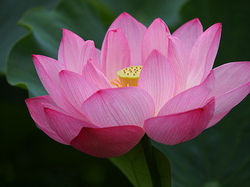 In this course you will learn how to keep a moment-to-moment awareness of thoughts, emotions and bodily sensations, as a way to improve your overall quality of life. Mindfulness practice has been shown to help in stress reduction, emotion regulation, chronic pain management, improved attention and focus, as well as a number of other benefits. Through meditations practices, exercises, and learning about the Four Noble Truths, the Eightfold Path to Wellness and the Five Mindfulness Trainings, you will develop tools necessary to continue the practice of mindfulness after the course ends. Who is this course for?
The 8-week course will cover:
Course InformationCourse work begins the week of Feb. 22nd and ends the week of April 26th, 2015 (with a break mid-way)
*Donations go toward supplies and supporting the livelihood of the teacher. If you cannot donate the suggested amount, please consider an amount comfortable to you, or contact Rev. Do’an Prajna to discuss other options. No one will be turned away due to lack of funds.
|
A blog by the Lotus Heart Zen Meditation and Study Group members
Practice SchedulesArchives
June 2022
|

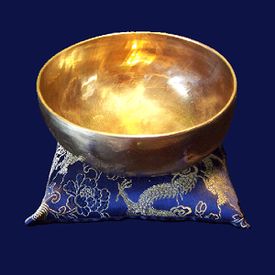
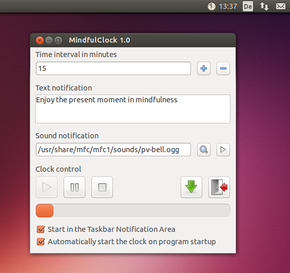

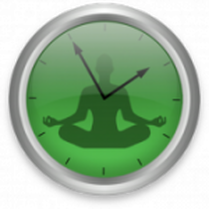


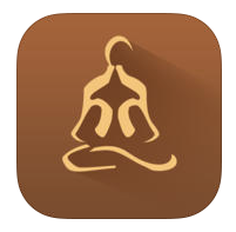
 RSS Feed
RSS Feed
